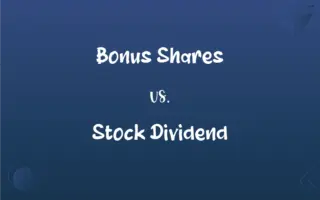Along vs. Across: What's the Difference?
Edited by Aimie Carlson || By Janet White || Published on December 2, 2023
Along refers to movement in a continuous line following a path or object, whereas across implies moving from one side to the other of something.

Key Differences
Along is used to describe movement following the length of something, while across indicates a path that goes from one side to the other, cutting through or over.
When moving along, the motion is parallel to something, such as a road or river. Across, on the other hand, implies crossing over an area or surface.
Along often suggests a linear, continuous movement beside or in line with an object. Across, in contrast, conveys a sense of overcoming a boundary or barrier.
To travel along a path is to follow its course, while to go across something is to traverse it, reaching the opposite side.
Along can imply a proximity or closeness to a linear feature, whereas across emphasizes a breadth or span being crossed.
ADVERTISEMENT
Comparison Chart
Direction of Movement
Parallel to a path or surface.
From one side to the other of a surface.
Sense of Motion
Continuous and linear.
Transversal, often cutting through.
Relation to an Object
Alongside or in line with.
Overcoming or traversing an area.
Implication of Action
Following a path or border.
Crossing a barrier or boundary.
Connotation
Proximity and lengthwise movement.
Spanning and overcoming distance.
ADVERTISEMENT
Along and Across Definitions
Along
Moving or extending in a continuous line.
The cat ran along the fence, chasing birds.
Across
From one side to the other of something.
She swam across the lake in record time.
Along
In accordance with or following.
The project is moving along as planned.
Across
Reaching or spanning completely over.
The bridge runs across the river.
Along
In a line parallel to the length of something.
She walked along the riverbank, enjoying the view.
Across
On or to the opposite side of.
The grocery store is across the street.
Along
In company with; accompanying.
He brought his guitar along to the campfire.
Across
In opposition or contrast to.
His ideas ran across the norms of the society.
Along
At a point or points on.
There are several cafes along this street.
Across
Extending or directly over.
A rainbow formed across the sky.
Along
Over the length of
Walked along the path.
Across
On, at, or from the other side of
Across the street.
Along
On a line or course parallel and close to; continuously beside
Rowed along the shore.
The trees along the avenue.
Across
So as to cross; through
Drew lines across the paper.
FAQs
What does along mean in terms of direction?
Along implies movement in a continuous line parallel to something.
Does along imply a linear path?
Yes, along typically suggests a straight or gently curving path.
Is across used for short distances?
Across can refer to both short and long distances, emphasizing transversal.
Can along be used to describe proximity?
Yes, it often indicates closeness along the length of something.
How is across used to describe movement?
Across describes moving from one side to another over something.
Can along be used in the context of time?
Yes, e.g., "Along the course of the week."
Can across imply overcoming obstacles?
Yes, it often suggests crossing over barriers or boundaries.
Does across indicate a direct path?
Typically, yes, it implies a more direct path than along.
Is along used for paths beside rivers or roads?
Yes, it's commonly used for paths parallel to rivers, roads, etc.
How does along relate to companionship?
It can mean bringing someone or something with you.
Is along appropriate for describing routes?
Yes, especially when following the length of a route.
Can across be used metaphorically?
Yes, for example, "His opinion was across from mine."
How does across work in terms of visual span?
Across can indicate a visual span, like a rainbow across the sky.
How does across relate to opposition?
It can describe things in contrast or opposing positions.
Can along be used in abstract contexts?
Yes, such as "progressing along a plan."
Does along imply following an existing path?
Generally, yes, it suggests following a set path or course.
Is along suitable for describing scenic routes?
Yes, particularly for routes with notable features along them.
How does across function in navigation?
It's used for indicating a path over an area, like a field.
Is across suitable for spatial relations in diagrams?
Yes, it's often used to describe positions in diagrams or maps.
Can across be used for crossing streets?
Yes, like "walking across the street."
About Author
Written by
Janet WhiteJanet White has been an esteemed writer and blogger for Difference Wiki. Holding a Master's degree in Science and Medical Journalism from the prestigious Boston University, she has consistently demonstrated her expertise and passion for her field. When she's not immersed in her work, Janet relishes her time exercising, delving into a good book, and cherishing moments with friends and family.
Edited by
Aimie CarlsonAimie Carlson, holding a master's degree in English literature, is a fervent English language enthusiast. She lends her writing talents to Difference Wiki, a prominent website that specializes in comparisons, offering readers insightful analyses that both captivate and inform.






































































